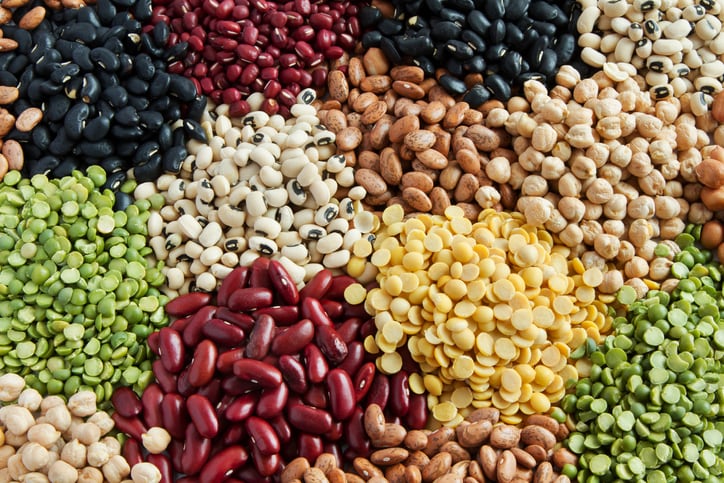Growing more legumes, like beans and lentils, is potentially a more sustainable and nutritious approach to European agriculture, shows a new study in Frontiers in Sustainable Food Systems. This study claims it is the first holistic evidence that adding legumes to traditional crop rotations (typically including barley, wheat and rapeseed) offers significant environmental benefits as well as increased nutritional value for humans and livestock.
"This strategy can contribute significantly to the specific European Union Green Deal Farm to Fork objectives to reduce greenhouse gas emissions, chemical pesticide use and synthetic fertilizer use," said first author Marcela Porto Costa, of Bangor University in the UK. "For example, in Scotland, we've shown that the introduction of a legume crop into the typical rotation reduced external nitrogen requirements by almost half whilst maintaining the same output of food measured in terms of potential human nutrition."
In contrast to other crop types, legumes are among the only crops that are capable of getting all of the nitrogen they need simply from the air around them, the study wrote. From a nutritional perspective, legumes are also one of the most nutrient-rich crops, providing protein, fiber, folate, iron, potassium, magnesium and vitamins.
“Despite these pertinent benefits,” the study wrote, “legumes are not widely cultivated in Europe, covering only 1.5% of European arable land, compared to 14.5% worldwide.”
The researchers applied life cycle assessment to compare the environmental efficiency of ten rotations across three European climatic zones in terms of delivery of human and livestock nutrition.
The introduction of grain legumes into conventional cereal and oilseed rotations delivered human nutrition at lower environmental cost for most of the 16 impact categories studied, the researchers claimed. In Scotland, the introduction of a legume crop into the typical rotation reduced external nitrogen requirements by almost half to achieve the same human nutrition potential. In terms of livestock nutrition, legume-modified rotations also delivered more digestible protein at lower environmental cost compared with conventional rotations.
“Our results show that choice of functional unit has an important influence on the apparent efficiency of different crop rotations, and highlight a need for more research to develop functional units representing multiple nutritional attributes of crops for livestock feed. Nonetheless, results point to an important role for increased legume cultivation in Europe to contribute to the farm and diet sustainability goals of the European Union's Farm to Fork strategy."
Calculating nutritional delivery
"Our innovative approach goes beyond simple food footprints by looking at the footprint of delivering a specific quantity of human, or livestock, nutrition from all crops produced within representative crop rotations," added Dr David Styles, who coordinated the study and is based at the University of Limerick in Ireland. "This provides a clearer picture of inter-crop effects and the overall efficiency of different cropping sequences in delivering nutritious food (or livestock feed)."
So far this approach only calculates the potential nutritional delivery. The amount of nutrition ultimately delivered by different rotations will also depend on how foods are processed and sold. Further research is also needed to develop better calculations for livestock feed. The team plans to extend this approach to other types of crop rotations and additional agricultural locations and climates.
"Our results strengthen evidence on the positive role that healthy diet transitions could make to environmental sustainability," said Styles. "Legumes provide a healthier balance of carbohydrates, protein and fiber compared with cereal crops, and could improve the nutritional profile of the food we eat."
"These results also highlight the need for whole-system (multi-crop, farm-to-fork) thinking when designing interventions to drive sustainable food systems so that we can deliver better nutrition whilst reducing environmental impacts," added Costa.
Source
Legume-Modified Rotations Deliver Nutrition With Lower Environmental Impact
Front. Sustainable Food Systems, 13 April 2021



